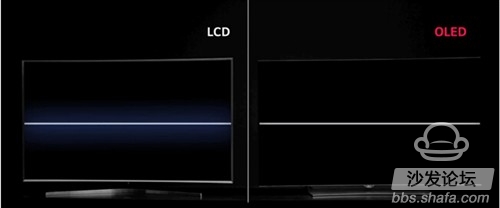Over the past few months, the OLED industry has continued to be a major event. With the advantages of color and design, OLED allows more people to see the hope of breaking the bottleneck in the industry. The heavy news of the TV industry at the end of 2015 was almost monopolized by OLED. Obviously, it is precisely to see the superiority of OLED and broad market space, these industry giants will spare no effort to get together to lay out the OLED industry. As the next-generation TV technology, the OLED advantages most appreciated by consumers are still the appearance, but the color performance has been neglected. This can not help but make people wonder, is OLED TV to achieve the ultimate color advantages, but become a tasteless?
Not long ago, the Consumer Electronics Survey Office of the China Electronic Chamber of Commerce took the lead in organizing experts and scholars in numerous fields to conduct comprehensive tasting activities for OLED TVs. Your industry experts also expressed their views on OLED from different perspectives. In the current LCD TV is in a stagnant period, OLED is being seen by more and more people as the main trend of future display technology.
High-quality image presents a new era of OLED display technology
The quality performance of OLED TVs made Liu Zhigang, deputy general manager of the National Radio and Television Product Quality Supervision and Inspection Center, greatly appreciate. He believes that in the many factors that affect the picture quality of television, the contrast between black and white backgrounds and light and shade is an important factor. Due to the different display principles, OLED TVs have great advantages in picture quality over LCD TVs. Because all the pixels of the OLED are self-luminous, and theoretically the contrast is infinite, a perfect black display can be presented. LCD TVs cannot completely block the light from the backlight. Inevitably, light leakage and halation are inevitable. Most conventional LCD TVs have a contrast ratio of less than 5,000:1. When a black screen is played, it is dark gray.

As an expert in color professional, Song Wenwen, deputy director of the Institute of Color Research at Tsinghua University, said that OLED TV's color performance and infinite contrast can leave a deep impression. OLED TVs have true and natural color reproduction capabilities, and have extremely high color saturation. They can reflect pure colors and strong contrasting colors so that the whole picture presents a fresh and lively feeling. It is full and gorgeous.

Of course, the wide viewing angle of OLED TVs is also unmatched by LCD TVs. Usually the family watch TV is multiple people, each person's viewing angle is not the same, so the TV's viewing angle is very important. Professor Sha Zhanxiang of the Beijing Film Academy felt a lot after watching the scenes presented by OLED TVs: “I have found that the OLED TV's color angle of view and horizontal/vertical contrast angle are all excellent and can maintain the true colors of the screen. With a good sense of hierarchy, this is the best performance in current TV products."

In terms of image performance, Sun Qifeng, engineer of the Digital TV Standard Compliance Testing Center of the Ministry of Industry and Information Technology, gave a more professional interpretation. OLED TVs use self-illumination technology, and the response speed is much faster than that of LCD LCD TVs. Response time is negligible compared to LCD TVs. Therefore, OLED can completely solve the problem of smearing. The high-speed dynamic performance can perfectly display the exquisite quality of ultra-high definition, and there is no residual image problem in the daily viewing, which enables the family's television viewing experience to be fully upgraded.


A variety of physical forms show that OLED will have a promising application prospect in the future
The curved appearance of curved LCD TVs has once caused consumers to flock to it. Today, the appearance of OLEDs is even more amazing. Also based on the advantages brought by self-luminescence, the OLED screen can not only achieve the ultra-thin and ultra-thin within 1mm, but also can realize future display forms such as curling, folding, transparent, and double-sided display. In theory, OLED screens can be attached to the surface of any transparent or irregular object, creating a "show everywhere" future world.
The advantages of ultra-thin and multiple display forms also give designers more room to play. Actually, the chief designer of the home, Leng Fuchuan, emphasized that while people are gradually pursuing exquisite and simple living, home design is increasingly seeking a balance between fashion and simplicity, and a combination of art and beauty. The ultra-thin ultra-thin design of millimeter OLED TV, with its simple style but extremely formal beauty, integrates with the home space and combines space layout with practical functions. It is a fashion design home designer.

It is understood that, at present, LG Electronics, Skyworth, Konka, Changhong and other well-known TV manufacturers have introduced the latest generation of OLED organic TV, becoming the forerunner of the OLED market. The rapid follow-up of these manufacturers has greatly accelerated the development of the OLED industry. According to Lu Jiebo, deputy secretary-general of the China Electronic Chamber of Commerce, in 2015, OLED TV has entered a stage of full-scale eruption. OLED has been fully matured in terms of technology, product diversification, and product yield, and its product prices have also been greatly reduced. Lu edge wave predicts that global OLED TV sales will reach 450,000 units in 2015, 6 million units in 2017, and will exceed 10 million units by 2020, becoming the mainstream high-end product in the color TV consumer market, and the TV industry will officially enter OLED. era.
Not long ago, the Consumer Electronics Survey Office of the China Electronic Chamber of Commerce took the lead in organizing experts and scholars in numerous fields to conduct comprehensive tasting activities for OLED TVs. Your industry experts also expressed their views on OLED from different perspectives. In the current LCD TV is in a stagnant period, OLED is being seen by more and more people as the main trend of future display technology.
High-quality image presents a new era of OLED display technology
The quality performance of OLED TVs made Liu Zhigang, deputy general manager of the National Radio and Television Product Quality Supervision and Inspection Center, greatly appreciate. He believes that in the many factors that affect the picture quality of television, the contrast between black and white backgrounds and light and shade is an important factor. Due to the different display principles, OLED TVs have great advantages in picture quality over LCD TVs. Because all the pixels of the OLED are self-luminous, and theoretically the contrast is infinite, a perfect black display can be presented. LCD TVs cannot completely block the light from the backlight. Inevitably, light leakage and halation are inevitable. Most conventional LCD TVs have a contrast ratio of less than 5,000:1. When a black screen is played, it is dark gray.

OLED and LCD LCD black performance contrast
As an expert in color professional, Song Wenwen, deputy director of the Institute of Color Research at Tsinghua University, said that OLED TV's color performance and infinite contrast can leave a deep impression. OLED TVs have true and natural color reproduction capabilities, and have extremely high color saturation. They can reflect pure colors and strong contrasting colors so that the whole picture presents a fresh and lively feeling. It is full and gorgeous.

OLED has superior color reproduction and color saturation
Of course, the wide viewing angle of OLED TVs is also unmatched by LCD TVs. Usually the family watch TV is multiple people, each person's viewing angle is not the same, so the TV's viewing angle is very important. Professor Sha Zhanxiang of the Beijing Film Academy felt a lot after watching the scenes presented by OLED TVs: “I have found that the OLED TV's color angle of view and horizontal/vertical contrast angle are all excellent and can maintain the true colors of the screen. With a good sense of hierarchy, this is the best performance in current TV products."

OLED and LCD LCD brightness\chromatic angle of view contrast
In terms of image performance, Sun Qifeng, engineer of the Digital TV Standard Compliance Testing Center of the Ministry of Industry and Information Technology, gave a more professional interpretation. OLED TVs use self-illumination technology, and the response speed is much faster than that of LCD LCD TVs. Response time is negligible compared to LCD TVs. Therefore, OLED can completely solve the problem of smearing. The high-speed dynamic performance can perfectly display the exquisite quality of ultra-high definition, and there is no residual image problem in the daily viewing, which enables the family's television viewing experience to be fully upgraded.

Ministry of Industry Digital TV Standard Compliance Testing Center Sun Qifeng

Comparison of Dynamic Performance between OLED and LCD
A variety of physical forms show that OLED will have a promising application prospect in the future
The curved appearance of curved LCD TVs has once caused consumers to flock to it. Today, the appearance of OLEDs is even more amazing. Also based on the advantages brought by self-luminescence, the OLED screen can not only achieve the ultra-thin and ultra-thin within 1mm, but also can realize future display forms such as curling, folding, transparent, and double-sided display. In theory, OLED screens can be attached to the surface of any transparent or irregular object, creating a "show everywhere" future world.
The advantages of ultra-thin and multiple display forms also give designers more room to play. Actually, the chief designer of the home, Leng Fuchuan, emphasized that while people are gradually pursuing exquisite and simple living, home design is increasingly seeking a balance between fashion and simplicity, and a combination of art and beauty. The ultra-thin ultra-thin design of millimeter OLED TV, with its simple style but extremely formal beauty, integrates with the home space and combines space layout with practical functions. It is a fashion design home designer.

China Electronic Chamber of Commerce Deputy Secretary-General Lu Renbo
It is understood that, at present, LG Electronics, Skyworth, Konka, Changhong and other well-known TV manufacturers have introduced the latest generation of OLED organic TV, becoming the forerunner of the OLED market. The rapid follow-up of these manufacturers has greatly accelerated the development of the OLED industry. According to Lu Jiebo, deputy secretary-general of the China Electronic Chamber of Commerce, in 2015, OLED TV has entered a stage of full-scale eruption. OLED has been fully matured in terms of technology, product diversification, and product yield, and its product prices have also been greatly reduced. Lu edge wave predicts that global OLED TV sales will reach 450,000 units in 2015, 6 million units in 2017, and will exceed 10 million units by 2020, becoming the mainstream high-end product in the color TV consumer market, and the TV industry will officially enter OLED. era.
